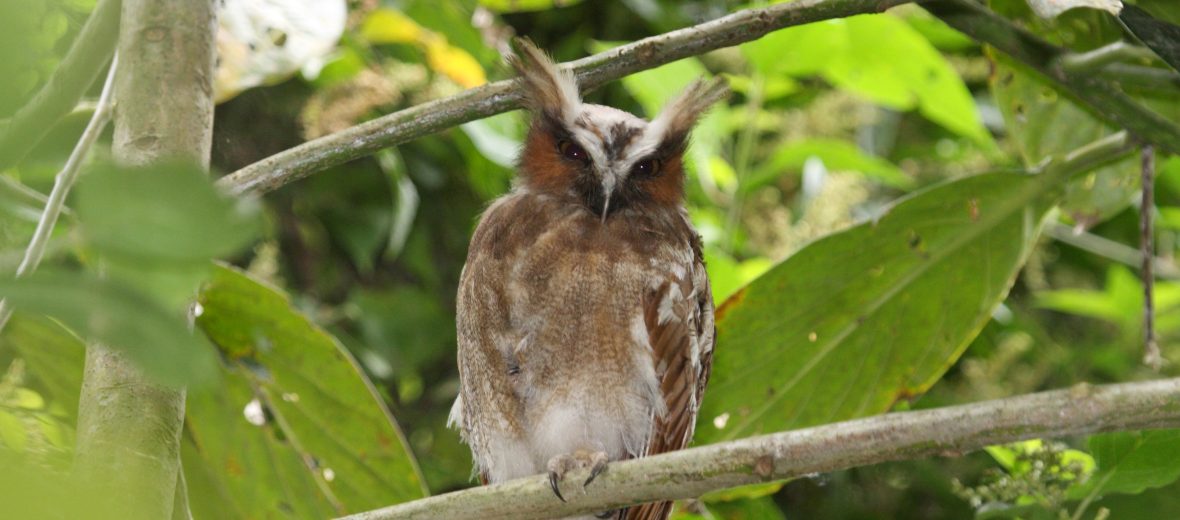
The crested owl can be found in Mexico, Central, and South America. They prefer old growth and secondary growth tropical and subtropical, moist lowland and montane forests. These owls are relatively abundant throughout their range although they do have a decreasing population. They number an estimated 10,000 +/- wild individuals and don’t face too many threats, sans habitat destruction and loss. Therefore, the IUCN lists them as Least Concern.
First the Stats…
Scientific name: Lophostrix cristata
Weight: Up to 1.37 lbs.
Length: Up to 16.93 inches
Wingspan: Up to 25.6 inches
Lifespan: Up to 5+ years
Now on to the Facts!
1.) These owls are nocturnal (active at night).
2.) The crested owl is a monotypic species. This means they are the only member of their genus Lophostrix.
3.) Adults have 2 color morphs: pale and dark.
4.) If these owls are disturbed by a predator or an otherwise unknown potential threat, they will stand tall and thin & erect their ear tufts upwards.
5.) They roost up on high at up to 32+ feet, nestled in the branches of trees.
But wait, there’s more on the crested owl!
6.) While these owls primarily feast on insects, they will also take small rodents and even bats.
7.) Breeding takes place at the end of the dry season and into the wet season.
Did you know…?
Owls can rotate their head up to 270°! This is due to the fact that they cannot rotate their eyes in their sockets.
8.) Nests are made from naturally occurring holes and hollows in trees.
9.) Not much else is known about their breeding, like how many eggs they lay and so forth.
10.) Due to serrated flight feathers, these and other owls are able to fly almost completely silently.
Now a Short Crested Owl Video!
Be sure to share & comment below! Also, check out the Critter Science YouTube channel. Videos added regularly!
Want to suggest a critter for me to write about? Let me know here.
Photo credit: Dominic Sherony



